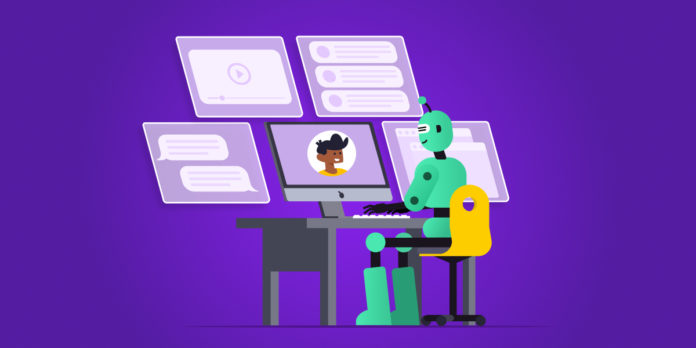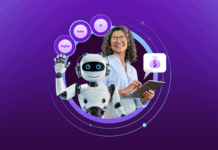Check out the previous installment of this series: The Times They Are a-Changing: Talent in the Contact Center Part 2: Players and Coaches
In this third installment of this blog series, we continue to discuss how to staff the contact centers of the future. With more and more interactions with customers occurring online, companies are turning to Artificial Intelligence (AI) chatbots to keep up with high online traffic. Let’s see how these bots are being implemented across industries.
Gartner predicts that by 2021, fifteen percent of all interactions will be fully handled via Artificial Intelligence. How will that help customers?
Suppose you wake up at 3AM worrying about car insurance coverage for your new teenage driver who just got a license today. A bot, who like many teenagers is “awake” at 3 AM, can gather the needed information by asking questions about your issue and your teen’s driver’s ed certifications, and combine it with knowledge about your teen’s age and the cars currently on your policy. With this knowledge, the bot can produce a fully personalized calculation regarding the cost for your different coverage alternatives, and deliver a set of nicely formatted, easy-to-understand options to the screen in front of you. That’s pretty awesome!
Planned Use of AI Among Service Organizations
But bots are not completely self-learning, all-knowing creatures. Let’s take a look at how to manage bots, and then later we’ll look at how to design them and fit them into the overall customer service solution set.
You’ll Never Walk Alone – Monitoring and Coaching the Bots
Once they are put into production, bots will need supervision similar to live agents – to make sure that they are “behaving” and achieving the desired results. If you have seen The Terminator, 2001: A Space Odyssey, Ex Machina, RoboCop or any number of similar dystopian SciFi flicks, you know that AI gone bad can be very destructive, very fast. So it is good to have a bot supervisor to do real-time monitoring of behavior and results from the bots, and identify areas for coaching to ensure continuous improvement. You’ll want these supervisors to pull the plug quickly on bots that aren’t properly understanding customer needs or are providing strange responses to inquiries.
As for coaching, the supervisor can be equipped to make some adjustments to the bot performance, including:
- Creating, tagging and classifying bot responses to improve results.
- Reconfigure which issues are handled by which bots, and when to invoke a human agent.
- Setting up training sessions for bots to review and learn from sessions handled by humans.
But this coaching and training job, along with hiring and even firing of virtual agents is a shared responsibility between the bot supervisors, the contact center manager, and another team that exists today but whose composition and role will be greatly transformed – the Research Team. Stay tuned to find out more!
Check out the next installment of this series: The Times They Are a-Changing: Talent in the Contact Center Part 4: The Research Team.





